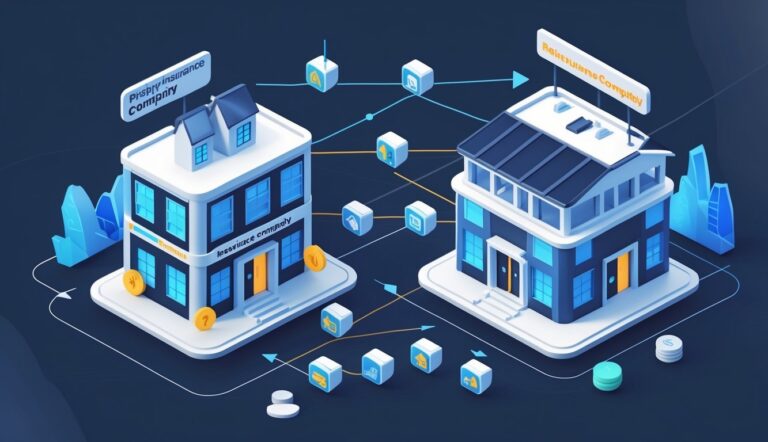Overview of Legal Challenges
Navigating the legal challenges within the insurance industry requires a thorough understanding of the legal landscape.
Various legal issues can arise from contracts, property law, family law, and criminal law, impacting your operations.
Common Legal Issues in Insurance:
-
Contract Disputes: Disagreements over policy terms can lead to significant legal challenges. Understanding your contractual obligations is crucial.
-
Property Law and Disputes: Insurance claims often involve property coverage. Be aware of both state laws and regulations affecting these claims.
-
Family Law: Aspects such as divorce can complicate insurance matters, particularly life and health policies.
Legal Risks and Pitfalls:
You should stay alert to potential legal risks such as compliance issues with state laws.
Failure to adhere can lead to costly legal disputes or regulatory penalties.
Understanding the Legal System:
Familiarity with the legal system, including state laws that govern your operations, is vital.
This knowledge helps you avoid legal pitfalls and prepare for any disputes that may arise.
By addressing these challenges proactively, you can protect your interests and ensure smoother operations within the insurance sector.
Careful management and legal assurance can mitigate risks associated with inherent legal complexities.
Intellectual Property and Compliance

Understanding the intersection of intellectual property and compliance is crucial for businesses, especially within the insurance industry.
You must navigate complex laws and regulations while safeguarding your intellectual property rights, including copyrights, patents, and trademarks.
Intellectual Property Infringement
Intellectual property infringement occurs when someone uses your protected creations without permission.
This can involve unauthorized use of copyrighted materials, patented inventions, or trademarked names.
In the insurance industry, this could mean another company using your proprietary methodologies or branding without consent.
To combat this, you should implement strong IP policies, conduct regular audits, and seek legal recourse when necessary.
Awareness of common infringement types helps you identify and mitigate risks effectively.
Creating clear contracts and agreements with partners and clients can also establish boundaries and protect your interests.
Navigating Regulations and Compliance Measures
Compliance with intellectual property laws is essential for maintaining your business’s credibility.
Various regulations govern how you can use and protect your IP assets.
You need to stay updated on laws such as the Copyright Act, the Patent Act, and the Lanham Act for trademarks.
Establishing an internal compliance program can help you ensure adherence to these laws.
Training your employees on IP rights and regulations fosters a culture of respect for intellectual property.
Regular reviews of your compliance strategies and legal frameworks also enhance your ability to operate within the bounds of the law while maximizing your IP potential.
Employment Law and Workplace Disputes

Navigating employment law can be complex, especially when issues like discrimination and wrongful termination arise.
Understanding your rights and the legal options available to address disputes is crucial in protecting your interests.
Discrimination and Harassment Resolutions
In the workplace, discrimination and harassment can take various forms, affecting employee morale and productivity.
Employment laws prohibit discriminatory practices based on race, gender, age, and disability.
To address these issues, you may consider several resolution methods:
- Mediation: A neutral third party helps facilitate communication between you and your employer to reach a mutually satisfactory agreement.
- Arbitration: This involves a formal process where a neutral arbitrator makes binding decisions based on the evidence and arguments presented.
Both methods can save time and resources compared to traditional litigation.
It’s advisable to work with legal professionals who specialize in employment law to ensure that your case is effectively represented.
Wrongful Termination and Employment Law Violations
Wrongful termination occurs when you lose your job for illegal reasons, such as retaliation or violations of employment contracts.
Employment law violations can also arise from failure to adhere to proper procedures when terminating employees.
Key points to consider include:
- Documentation: Keep records of your employment, including any communications about your termination.
- Legal Representation: Consulting with legal professionals can help you assess your situation and determine the best course of action.
Engaging in negotiation with your employer, facilitated by a legal professional, may lead to a resolution that acknowledges your rights.
It’s essential to act promptly, as there are often deadlines for filing claims related to wrongful termination or employment law violations.
Litigation Processes and Dispute Resolution

Understanding the various litigation processes and options for dispute resolution is essential in navigating legal challenges.
Different types of disputes require specific approaches, whether they’re rooted in contracts, real estate, or personal injury claims.
Contract Litigation and ADR
When facing contract disputes, you have options to resolve them either through litigation or alternative dispute resolution (ADR).
Litigation often involves formal legal action and can be costly and time-consuming.
ADR methods, such as mediation and arbitration, are typically quicker and less expensive.
Mediation allows parties to negotiate a solution with the help of a neutral third party.
Arbitration involves a binding decision made by an arbitrator.
Understanding the nuances of contract law can significantly enhance your position in these scenarios.
Property and Real Estate Disputes
Real estate disputes can arise from various issues, including title disputes, zoning issues, and lease disagreements.
You may find that litigation is necessary when legal rights about property ownership are contested.
Alternatively, many disputes can be resolved through mediation or arbitration, making the process less adversarial.
It is important to seek legal advice to determine the best course of action.
Knowledge of relevant laws can greatly affect outcomes in property disputes.
You should always consider the potential for negotiating settlements to avoid lengthy litigation.
Personal Injury Claims and Criminal Charges
Personal injury claims often stem from negligence, requiring thorough investigation and documentation of damages.
When entering litigation, you will need to present evidence of liability and damages, which may involve expert testimonies.
On the other hand, criminal charges involve prosecution by the government, leading to a different legal approach.
Understanding your rights during this process is crucial.
Legal representation is highly recommended, as the stakes are often significant, impacting both your future and finances.
Engaging in ADR is less common in criminal cases, where the court system typically handles disputes.
Professional Skills and Communication in Legal Contexts

Effective communication is vital for legal professionals navigating complex challenges in the insurance industry.
Key skills include clear documentation and an understanding of legal precedents, both of which are essential when working with legal teams and addressing legal battles.
Effective Legal Teams and Documentation
Building an effective legal team requires robust communication skills.
You must ensure that all members understand their roles and responsibilities clearly.
Regular meetings can enhance collaboration, allowing you to discuss ongoing cases and share important information.
In legal documentation, clarity is paramount.
Legal documents, such as memos of understanding (MOUs) and contracts, should be precise and comprehensible to avoid misunderstandings.
Use straightforward language and ensure that all critical terms are defined.
In an insurance context, these documents often dictate the outcomes of claims and disputes.
Miscommunication can lead to prolonged legal battles, increased costs, and dissatisfied clients.
Consequently, thorough reviews and checklists serve as vital tools in maintaining documentation quality.
Understanding Legal Precedents and Communication
Understanding legal precedents is crucial for any legal professional, especially within insurance contexts.
Precedents help shape arguments and provide a framework for navigating legal challenges.
You must stay updated on relevant case law that affects your area of practice.
When communicating these precedents to clients or colleagues, ensure your explanation is clear and accessible.
Highlight how specific rulings can impact ongoing cases, particularly when approaching juries or presenting in court.
Your ability to translate complex legal jargon into understandable terms can significantly influence client relations.
This clarity in communication not only fosters trust but also enhances your effectiveness as a legal advocate.
Frequently Asked Questions

Legal challenges can arise in various contexts, including corporate, civil rights, and international law.
Understanding the specifics of these challenges can help you navigate them more effectively.
What are common types of legal challenges faced in corporate law?
In corporate law, you may encounter challenges such as regulatory compliance issues, breaches of contract, and disputes over corporate governance.
Shareholder lawsuits and issues related to mergers and acquisitions are also prevalent.
How does one initiate a legal challenge in the United States?
To initiate a legal challenge in the United States, you typically file a complaint in the appropriate court.
This involves detailing your claims and the relief sought.
You must also comply with specific procedural rules and deadlines.
What constitutes a legal challenge under international law?
A legal challenge under international law often involves disputes between states or violations of international treaties.
Issues such as human rights violations or conflicts arising from trade agreements can also constitute legal challenges on this level.
What are the recent landmark legal challenges impacting constitutional law?
Recent landmark cases impacting constitutional law include challenges related to freedom of speech, voting rights, and equal protection under the law.
These cases can shape judicial interpretations and influence future legislation.
How can an individual navigate through legal challenges in civil rights cases?
To navigate legal challenges in civil rights cases, you should gather evidence, understand relevant laws, and seek legal counsel.
It’s essential to be aware of deadlines for filing lawsuits and to maintain thorough documentation of your claims.
What are the implications of emerging legal challenges in intellectual property rights?
Advancements in technology and digital media often lead to emerging legal challenges in intellectual property rights.
These issues can include copyright infringement and patent disputes.
They can significantly impact innovation and market competition.
Understanding your rights is crucial in this evolving landscape.






